
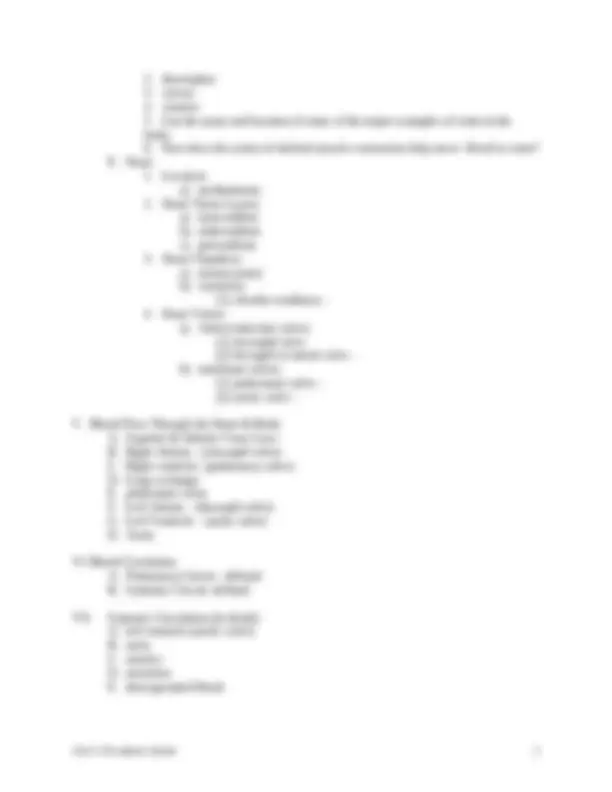
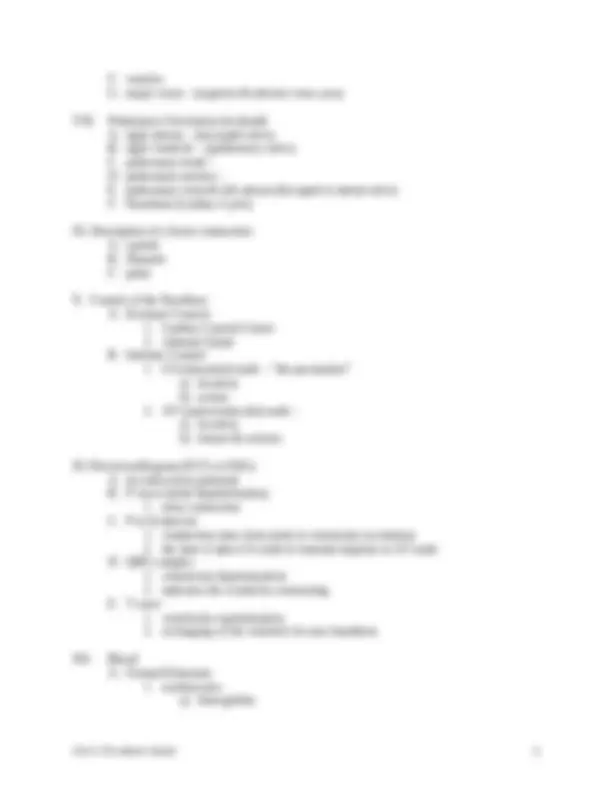
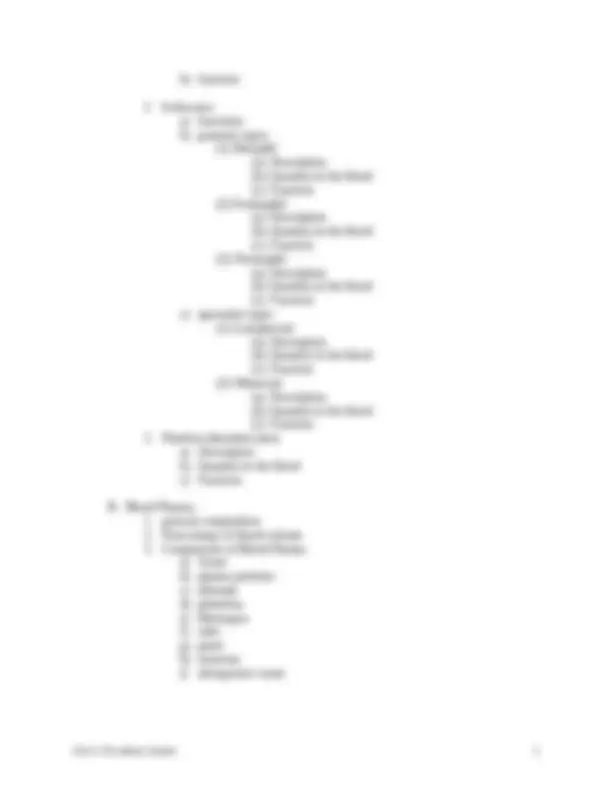
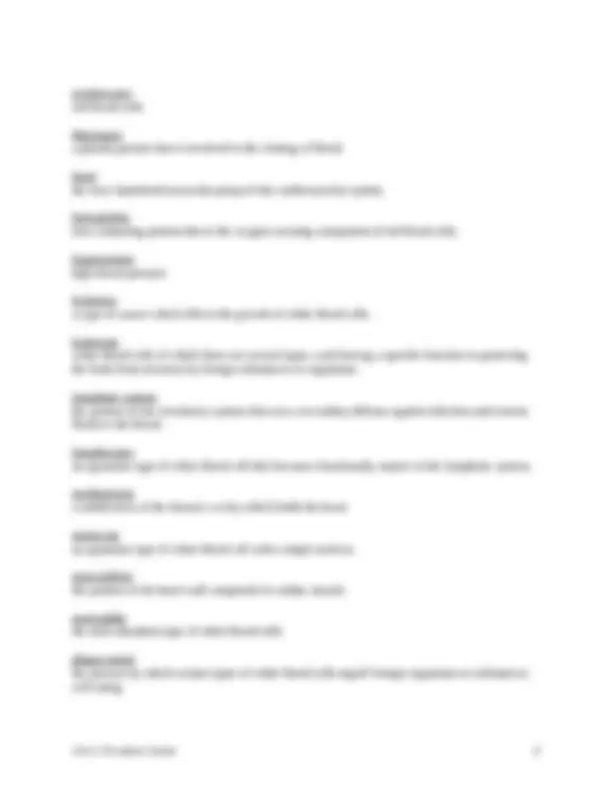
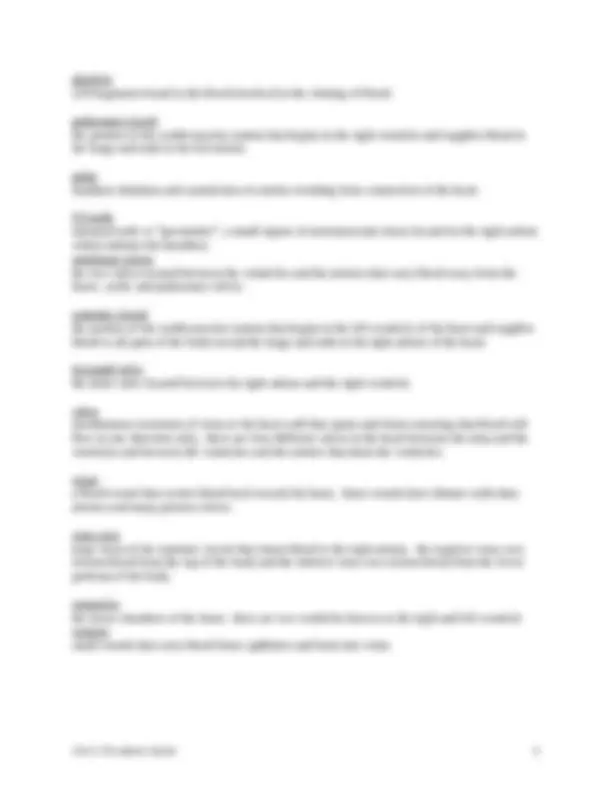


Study with the several resources on Docsity

Earn points by helping other students or get them with a premium plan


Prepare for your exams
Study with the several resources on Docsity

Earn points to download
Earn points by helping other students or get them with a premium plan
Community
Ask the community for help and clear up your study doubts
Discover the best universities in your country according to Docsity users
Free resources
Download our free guides on studying techniques, anxiety management strategies, and thesis advice from Docsity tutors
An in-depth study guide on the circulatory system, focusing on the heart, blood vessels, and blood. Topics include the functions of the circulatory system, components of the circulatory system, blood flow through the heart and body, and disorders of the circulatory system.
Typology: Study notes
1 / 9

This page cannot be seen from the preview
Don't miss anything!






BIO102 Unit 3 Circulatory System Objectives: The student will learn the major components of the circulatory system; the function and composition of the heart including the extrinsic and intrinsic controls of the heartbeat; the structure and function of the blood vessels; and the composition and function of the blood including the components of plasma and blood cells. Intermediate Objectives: Upon completion of this unit the student will be able to:
Study Guide I. Functions of the Circulatory System A. Composed of both the cardiovascular and Lymphatic Systems B. Carries nutrients C. Carries metabolic waste D. second line of defense II. Components of the Circulatory System A. Heart B. Blood vessels C. Blood D. Blood forming & blood storing structures: E. Lymphatic System III. Functions of the Circulatory System A. Transport B. Maintenance of body temperature C. Protection D. blood proteins IV. The Cardiovascular System A. Blood Vessels
F. venules G. major veins – (superior & inferior vena cava) VIII. Pulmonary Circulation (in detail) A. right atrium – (tricuspid valve) B. right ventricle – (pulmonary valve) C. pulmonary trunk – D. pulmonary arteries – E. pulmonary veins & left atrium (bicuspid or mitral valve) F. Heartbeat (Cardiac Cycle) IX. Description of a heart contraction: A. systole B. Diastole C. pulse X. Control of the Heartbeat A. Extrinsic Control
b) function:
Glossary aorta the largest artery in the body that receives blood from the left ventricle. atherosclerosis changes in the walls of large arteries consisting of the build up of lipid deposits. arteriole a small blood vessel that carries blood between arteries and capillaries. artery a major type of blood vessel that carries blood away from the heart; this type of blood vessel possesses thick elastic and muscular walls. atrium an upper chamber of the heart that lies above the ventricles. AV node The atrioventricular node; a small region of neuromuscular tissue that transmits impulses received from the sinoarial node (SA node) to the ventricle walls causing them to contract. basophils one of the granular types of white blood cells that stain deep blue with a basic dye. bicuspid valve or mitral valve; the heart valve located between the left atrium and the left ventricle. blood a type of connective tissue in which cells are suspended in a liquid called plasma. capillary microscopic blood vessels that are found between arterioles and venules; these blood vessels possess thin walls, sometimes only one cell thick which allow for the exchange of materials between the circulatory system and other tissues of the body. clotting a process of blood coagulation, usually when an injury occurs. coronary arteries arteries that supply blood to the walls of the heart. diastole relaxation of a heart chamber; the period of time when a heart chamber is not contracting. endocardium epithelial tissue that lies the interior of the heart.
erythrocytes red blood cells fibrinogen a plasma protein that is involved in the clotting of blood. heart the four chambered muscular pump of the cardiovascular system. hemoglobin iron containing protein that is the oxygen carrying component of red blood cells. hypertension high blood pressure leukemia a type of cancer which effects the growth of white blood cells. leukocyte white blood cells of which there are several types, each having a specific function in protecting the body from invasion by foreign substances or organisms. lymphatic system the portion of the circulatory system that acts a secondary defense against infection and returns fluids to the blood. lymphocytes an agranular type of white blood cell that becomes functionally mature in the lymphatic system. mediastinum a subdivision of the thoracic cavity which holds the heart. monocyte an agranular type of white blood cell with a single nucleus. myocardium the portion of the heart wall composed of cardiac muscle. neutrophils the most abundant type of white blood cells phagocytosis the process by which certain types of white blood cells engulf foreign organisms or substances; cell eating.